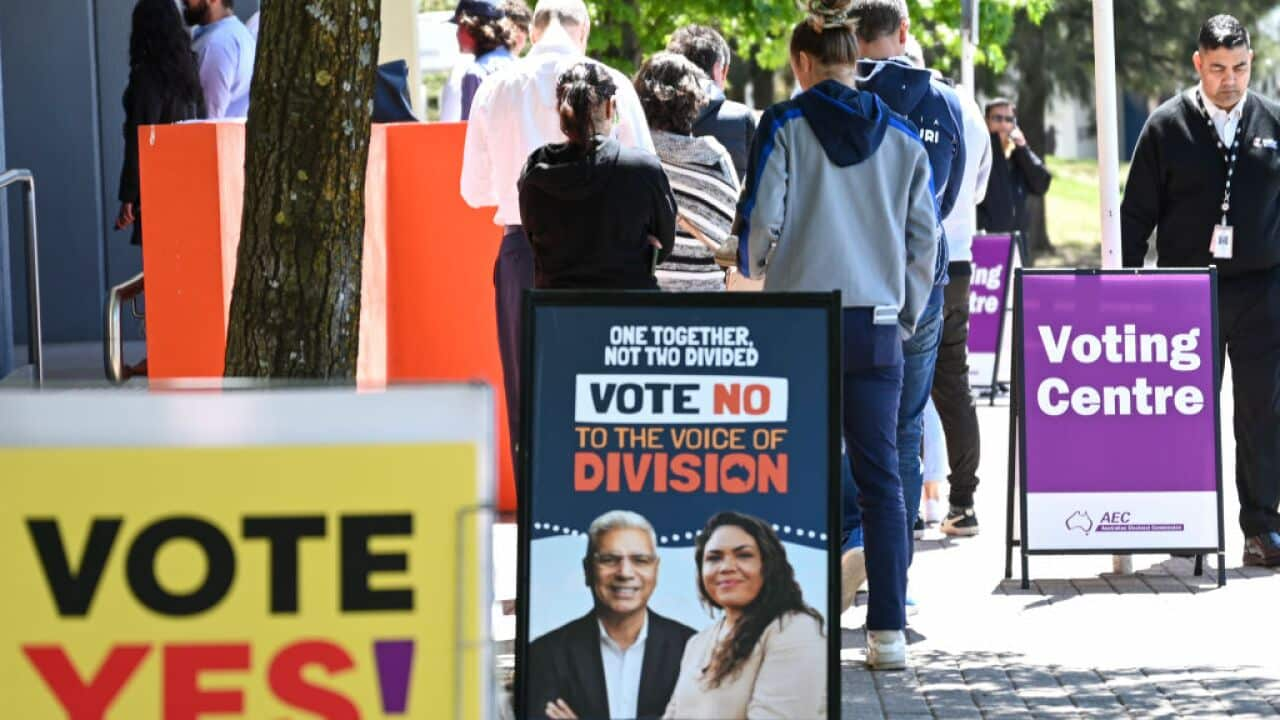KEY POINTS:
- The Yes and No pamphlets are soon to be published.
- They'll be available online on Tuesday, before being mailed to every household.
- They won't be fact-checked, so Australians are warned to look out for misinformation.
Australians will soon receive a package they haven't seen in nearly 25 years, if at all.
The Yes and No camps in the Voice to Parliament referendum have both signed off on their official pamphlets, nearly a month after the campaign was formally triggered.
Both will be added to a bundle set to hit Australian letterboxes, which will also include the and information on the vote.
The pamphlets are a tradition from referendums past but were nearly aborted this time around.
So who will receive them, what will they say, and should you trust them?
Who gets them, and when will they hit my mailbox?
Every household.
The Australian Electoral Commission (AEC) will publish online on Tuesday morning before more than 12 million physical pamphlets are printed out and mailed.
The AEC says that process will begin "in the coming weeks" and it has to happen no later than two weeks before the referendum. We're still .
Labor was initially hesitant to allow the pamphlets, arguing they had become outdated since Australia last held a referendum in 1999.
But after the Coalition insisted, Labor ultimately struck a deal to pass its referendum machinery bill through parliament.
It's also going to be a mammoth translation effort. The AEC hopes the documents will eventually be available in 55 languages, including 20 Indigenous languages.
Should I trust them?
They're not fact-checked, but SBS News is in the process of checking claims in the official pamphlets from the Yes and No campaigns.
The AEC says its role is purely as a "post-box" and it will distribute each pamphlet exactly as they're submitted - typos and all.
But it wants Australians to keep an eye out for misinformation or misleading claims, and points to its ' as a guide.
"Strong language that evokes negative emotions like anger or fear can make it easier for content to go viral. If you see something that makes you feel a strong emotional response, stop and consider why," that document says.
What does the Yes pamphlet say?
It outlines three main reasons to vote for the Voice:
- Recognition of Indigenous Australians in the constitution and paying respect to 65,000 years of culture and tradition
- Listening to Indigenous people's advice on matters that impact them, to improve government decision-making
- Better results in Indigenous health, education, employment, and housing.
The document opens with:
"Vote Yes for a better future for Aboriginal and Torres Strait Islander people and all Australians. Vote Yes for unity, hope, and to make a positive difference ... It's a change only you can make happen".
Labor, the Greens, pro-Voice Liberal MPs, and a host of independents were consulted on the pamphlet's contents.
What does the No pamphlet say?
It outlines four main reasons to vote against the Voice, saying it would be:
- Risky, because "no issue is beyond its reach" and
- Unknown, because Australians have not been provided sufficient detail
- Divisive, because it would add race to the constitution
- Permanent, because it could not be revoked except through another referendum.
It repeats claims that the Voice could spark a wave of litigation in the High Court, an argument rebuked by Solicitor-General Stephen Donaghue in April, and the document adds "decisions in relation to the economy, national security, infrastructure, health, education and more, would all be within its scope", although the Voice would only be able to advise rather than legislate on these issues.
"It is a leap into the unknown. This Voice has not been road tested ... If you don't know, vote no," the pamphlet concludes.
The No camp is diverse. Does this cover it all?
No.
But the arguments outlined in the pamphlet are the only ones that will be sent to every household.
Independent senator Lidia Thorpe was not consulted on the contents of the No camp's pamphlet and to its authors.

Independent Senator Lidia Thorpe's Blak Sovereign Movement will publish its own essay. Source: AAP / Lukas Coch
SBS News understands Thorpe's Blak sovereign movement will publish its own essay against the Voice later this week, which will be accessible online - though not on the AEC website.
One Nation leader Pauline Hanson has also previously threatened to publish her own pamphlet, saying the Coalition has "ignored" anti-Voice crossbenchers.
Will they actually change anything?
We're in uncharted territory.
Polls show , and Prime Minister Anthony Albanese was pinning some hope on the document's ability to reverse that trend.
"I think it's a very strong case ... I believe it will make a substantial difference," he told Sky News on Monday.
But social media and 24-hour news didn't exist in 1999, the last time Australians voted in a referendum.
And given the saturation of Voice news over the past few months, it remains unclear what impact, if any, the pamphlets will have.



